Figures & data
Figure 1. U.S. EPA standards for particulate emissions from heavy-duty diesel trucks (t) or urban buses (ub), calculated as grams particulate matter emitted per brake-horsepower-hour (g/bhp·hr) and adjusted relative to pre-1988 unregulated engine emissions. From Hesterberg et al.Citation8 and U.S. EPA Health Assessment Document for Diesel Engine ExhaustCitation3 (-, p. 2–16).
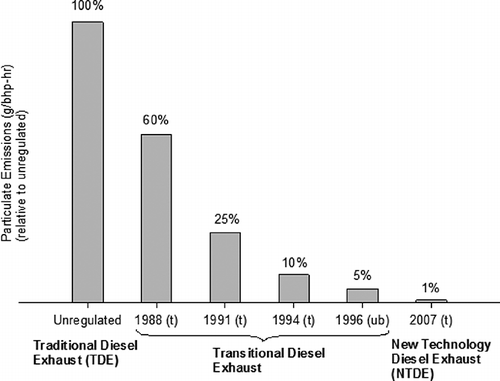
Table 1. Summary of diesel test vehicles in selected NTDE emissions testing studies
Figure 2. PM emissions from CARB–USC test vehicle fleet equipped with different aftertreatment technologies.Citation17,Citation18 Numbers indicate the removal efficiencies (%) for the corresponding aftertreatment. Asterisks indicate authors’ note that these reduction efficiencies should be given greater weight because these retrofits are directly comparable to baseline (with no aftertreatment) due to the use of the same vehicle. See for vehicle and aftertreatment specifics.
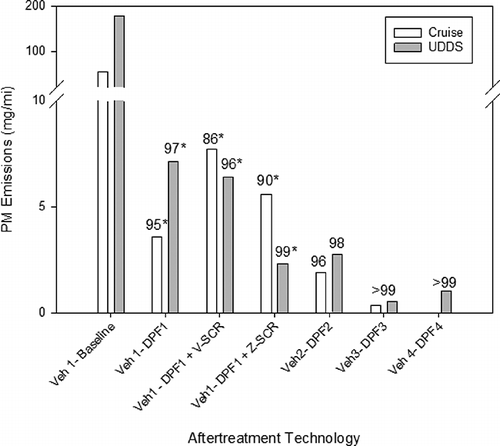
Figure 3. Representative compositions of particulate matter in NTDE (based on data from Khalek et al.Citation14) and TDE (based on data from KittelsonCitation36) from heavy-duty diesel engines tested in heavy-duty transient cycles. Note that there may be deviations from these compositions for particular engines due to the variability in DEP composition based on such factors as engine model, operating conditions, and fuel and lube oil compositions. Constituent labels are used as given in the actual study publications, recognizing that there are some differences in constituent categories between the two studies. For example, “Unburnt Oil” differs from “Organic Carbon”, given there are sources of organic carbon in DE other than just unburnt oil. In addition, “Ash and Other” includes both elements and elemental oxides, whereas “Elements w/o sulfur” is more restrictive and represents just elemental contributions. Notwithstanding some differences in the data shown in the plots, they demonstrate that not only is less PM emitted in NTDE on a per-mile basis, but the emitted PM differs in composition from the PM emitted in TDE.

Table 2. Summary of average unregulated emissions for 12 repeats of the 16-hour cycles for all four ACES engines compared to CRC E55/E59 data for 2004 technology engines (data from Khalek et al.Citation14)
Table 3. Percent removal efficiency for DEP chemical species compared to baseline vehicle with no aftertreatment (UDDS cycle, μg/km basis)
Table 4. Summary of PAH and nitro-PAH average emissions for the ACES testing (data from Khalek et al.Citation14) and for the Liu et al.Citation28 testing
Figure 4. Comparison of PCDD/F emissions from multiple engines (A and B) and aftertreatment configurations expressed using the 1998 World Health Organization (WHO) toxic equivalency quotients (TEQs) (adapted from Liu et al.Citation29). The comparison assumes that nondetects are present at the detection limit. Unless noted otherwise, all SCR systems are Cu-zeolite SCRs and diesel fuel is doped to 0.6 ppm chlorine.
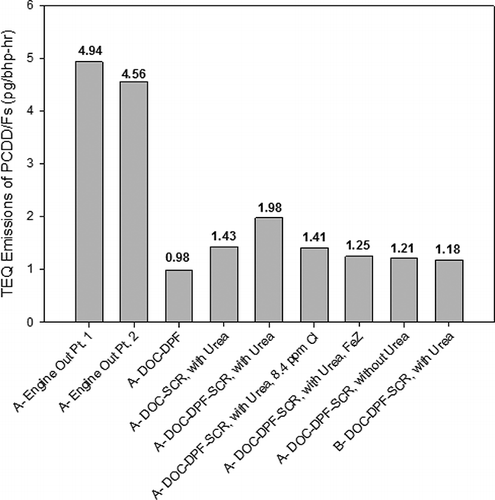
Table 5. Percent removal efficiencies for metal species, compared to a baseline vehicle lacking aftertreatment (CARB–USC diesel vehicle testing program data from Hu et al.Citation16; on a ng/km basis)
Figure 5. Average particle number emissions (note the logarithmic scale) for 2007 ACES engines (with and without C-DPF regeneration) versus a 2004 technology engine.Citation14 As discussed in Khalek et al.,Citation14 data for the 2007 ACES engines were based on 12 repeats of the 20-min Federal Test Procedure transient cycle (FTP-w) or 12 repeats of the 16-hr cycle, each for all four ACES engines and for sampling from an unoccupied animal exposure chamber set up on a constant volume sampler (CVS). Data for the 2004 technology engine were based on six repeats of the FTP transient cycle from a full flow CVS.
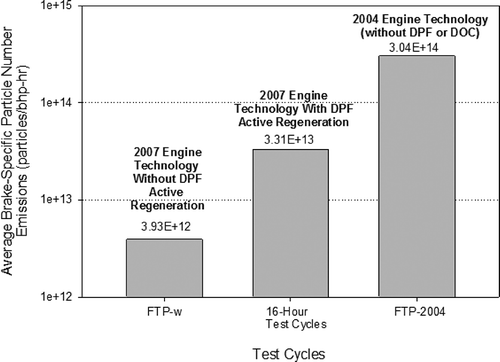
Figure 6. Results of Ames bacterial mutagenicity test results from the Finnish VTT studyCitation65 of diesel buses with and without aftertreatment (Euro 3 buses) and from the CARB studyCitation43,Citation87 of diesel buses with and without aftertreatment operated using three different diesel fuels (ECD, ECD1, and CARB fuels). Data shown are for the Salmonella strain TA98 with metabolic activation (+S9) and the particulate fraction only. The VTT study buses were operated using the European Braunschweig bus cycle, whereas the CARB study buses were operated using the Central Business District (CBD) cycle for transit buses. Average CNG particle-associated mutagenic activity and emissions are from CARB testingCitation91 of a CNG transit buses with aftertreatment (a catalyzed muffler).
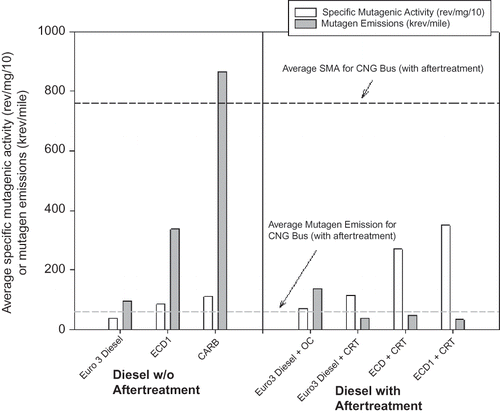
Figure 7. Particulate emissions (PM; g/mile) for transit buses (A) and passenger cars (B) of different engine technologies. Data for transit buses include TDE, NTDE, and CNG exhaust (both without aftertreatment and with oxidation catalyst; CNG+OC), with all testing for the Central Business District test cycle (means, standard errors plotted).Citation44,Citation93 Citation94 Citation95 Citation96 Citation97 Citation98 Citation99–Citation100 Data for passenger cars include TDE, NTDE, and CNG and gasoline exhaust, with pooling of data from a variety of transient test cycles (means, standard errors plotted).Citation76,Citation102
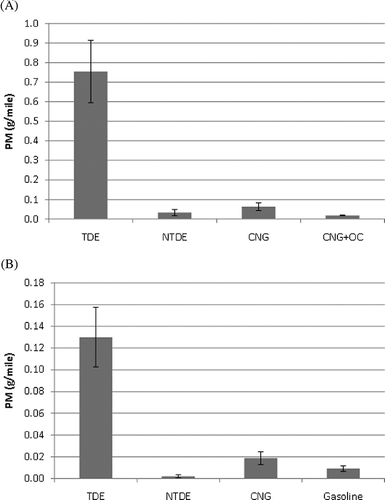
Figure 8. Comparison of mass and chemical species emissions (mg/mile, note the logarithmic scale) for light-duty vehicles representative of NTDE, GEE, and TDE tested on a chassis dynamometer for a cold-start New European Driving Cycle (NEDC) and a series of Artemis cycles.Citation86 Specific vehicle configurations include a Euro 4+ Honda Accord (2.2 L, i-CDTi) equipped with a ceramic-catalyzed diesel particulate filter (DPF), a closed-coupled oxidation catalyst (pre-cat), and exhaust gas recirculation (EGR), operated using low-sulfur (<10 ppm) diesel fuel and lube oil with a sulfur content of 8900 ppm wt (considered to be NTDE); a Euro 3 Toyota Corolla (1.8 L) equipped with a three-way catalytic converter and operated using unleaded gasoline with a research octane number (RON) of 95 and fully synthetic lube oil (considered to be GEE); and a Euro 1 compliant Volkswagen Golf (TDI; 1.9 L) operated using diesel fuel with a nominal sulfur content of 50 ppm wt (considered to be TDE).
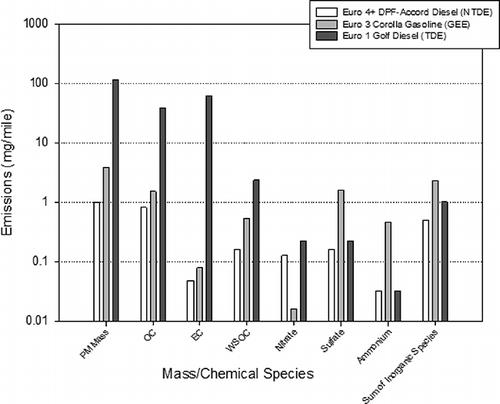
Figure 9. The elemental carbon proportions of total carbon from particulate emissions for transit buses (TDE, NTDE, and CNG) and passenger cars (gasoline) tested under transient test cycles and steady-state conditions. The transient test cycle for the transit buses was the Central Business District test cycle,Citation103 whereas the Unified Driving Cycle was used for the cars.Citation104 The steady-state data for transit buses and cars are from Holmén and AyalaCitation63 and Schauer et al.,Citation104 respectively.
